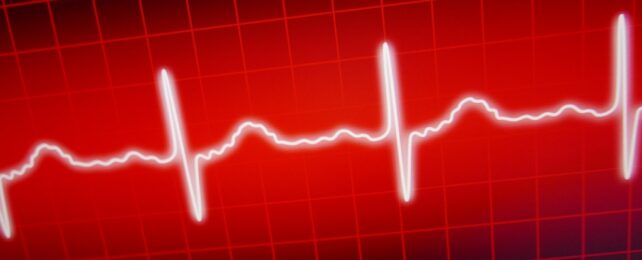It's no exaggeration to say that knowing how to use a defibrillator properly can save someone's life. A new study suggests one specific approach to pad placement is significantly more effective when it comes to getting the heart beating again.
According to a team of researchers led by the Oregon Health and Science University (OHSU), putting one pad on the chest and one on the back of the person who has suffered a cardiac arrest makes return of spontaneous circulation (ROSC) 2.64 times more likely than if the pads were placed on the front and side.
That's based on an analysis of 255 incidents attended by the Tualatin Valley Fire & Rescue team in Portland, between July 2019 and June 2023. The chest and back position (anterior-posterior or AP) was used with 158 people, and the chest and side position (anterior-lateral or AL) was used on the other 97 occasions.
"I didn't expect to see such a big difference," says Joshua Lupton, an assistant professor of emergency medicine at OHSU. "The fact that we did may light a fire in the medical community to fund some additional research to learn more."
The AP positioning isn't a new idea, and both AP and AL are regularly used by medical professionals. While AP is commonly instructed for infants, the AL approach is the one most people are going to be familiar with for fibrillating adults – and there's been very little research into which option is most effective.
There have been studies looking at the differences between AP and AL when the two approaches are used in the context of treating persistent atrial fibrillation (an abnormal heart rhythm). AP comes out on top here, too.
The thinking is that the AP placement effectively sandwiches the heart between the two pads, which increases the chances of it responding to the resulting electric shock, because more of the electricity reaches it.
"The key is, you want energy that goes from one pad to the other through the heart," says Mohamud Daya, a professor of emergency medicine at OHSU.
There are some limitations worth noting: this was an observational study rather than one carried out under more rigorous, clinical conditions, which means there may have been other factors involved in the varying recovery rates. What's more, the AL placement is often easier to apply than AP.
In addition, the AP or AL positioning only made a difference to getting the heart beating again. That difference disappeared when it came to the number of people who recovered to be discharged from hospital.
That highlights how pad placement is just one part of a bigger picture when it comes to recovery. Still, with only about 1 in 10 people surviving an out-of-hospital cardiac arrest, anything that can improve that figure has to be worth looking into.
"The less time that you're in cardiac arrest, the better," says Lupton. "The longer your brain has low blood flow, the lower your chances of having a good outcome."
The research has been published in JAMA Network Open.
